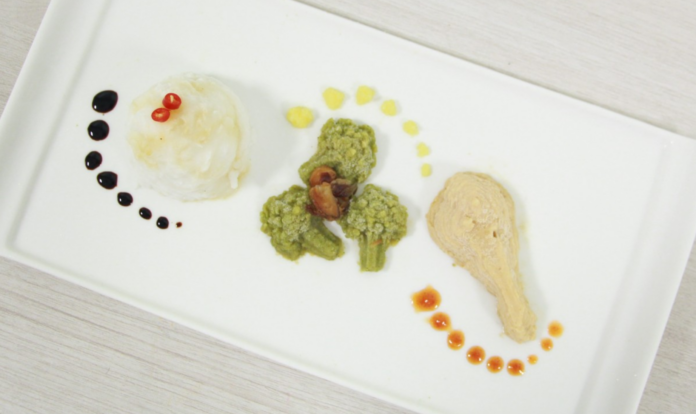Ana Salvá 26 Aug, 2020 for South China Morning Post
Broccoli, 3D-printed into unusual shapes to tempt a picky toddler. Beef stew, produced in the same way to make it easy to swallow for an elderly relative. Pork and potatoes, also rendered by a machine for a patient with oral cancer who can’t chew.Advances in 3D-printing mean printed food is becoming increasingly mainstream. It is deconstructed and modified for nutritional content and visual appeal, before being reconstructed as a meal. The old and the unwell stand to benefit the most from this food revolution – experts say there is an urgent need to analyse the food and nutritional needs of elderly people, as the proportion of the world’s population over 65 is expected to grow from 25 per cent to 40 per cent by 2030.
“Difficulty swallowing and chewing, together with loss of appetite and changes in the perception of taste and smell, are important factors in the prevalence of malnutrition in the elderly,” says Berta Alvarez, director of research and development at Biozoon, a German company that produces 3D-printed food items.
Alvarez works on the creation of innovative foods with a modified texture – foods designed for the elderly and those with chewing and swallowing problems.
Dysphagia, or difficulty swallowing, affects more than a third of old people and impairs their ability to consume normal food, she says. The elderly often have problems with their teeth, refuse meals, eat very small portions and prefer easy-to-eat foods over food that might better provide the nutrients they need.
Apart from 3D-printed food being easier to swallow, the amounts of sugar, salt and fat can also be controlled. “The idea is that dishes such as pork with potatoes can be printed on a large scale, directly on a plate with 3D printers in nursing homes,” Alvarez says.
This technology is not currently at the point where large-scale meals could reliably and efficiently be printed. But, the possibility for that in the future brings up a lot of questions regarding healthcare workers, dining services, and nutritional concerns. It would practically solve multiple issues of under nourishment and an inability to swallow. But how appetizing would a 3D printed meal be?
If the actual food content of the meal can be created with technological processes, what else about the dining experience could be as well?
Source: https://www.scmp.com/lifestyle/food-drink/article/3098689/3d-printed-food-how-pork-beef-potatoes-even-vegetables




